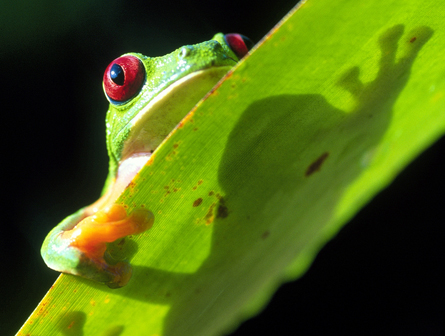- More than 2 years ago
One of the first broad looks at how well tropical reserves protect biodiversity has found that while some are relatively stable, others are in decline due to conditions just beyond their borders.

Logging, deforestation and fires just outside a park had strong effects on a reserve’s health, whereas factors such as air and water pollution were less significant, new research finds. “These parks are like imperfect mirrors,” says team leader William Laurance, an ecologist at James Cook University in Cairns, Australia. “They’re partially reflecting what’s going on around them.”
Laurance and nearly 200 coauthors report the findings online July 25 in Nature. Their study, which surveyed 60 reserves across 36 nations, “is shining some of the first light on something that we’ve talked about for quite a while,” says Lucas Joppa, a conservation biologist at Microsoft Research in Cambridge, England, who was not involved in the work. “It’s the first crack at an extremely important problem.”
Park managers and other officials may now be able to use the information to help figure out where to deploy their limited time and money, Laurance says. “Protected areas are our best bet for conserving nature into the future,” he says, “and we have to find ways to make them work as well as we possibly can.”
Many scientists have looked at how individual nature reserves have fared, or at how specific animals or plants have done across regions. Laurance and his colleagues decided to search instead for broad trends across large groups of organisms in the tropics, the world’s most biodiverse region.
The researchers identified and interviewed four to five expert field biologists for each site — people who averaged nearly two decades’ worth of mud on their boots. In detailed questionnaires and interviews, the local experts reported trends in 31 animal and plant groups. The researchers also asked about 21 potential drivers of ecosystem change such as illegal mining, hunting and selective logging.
After cross-checking the experts’ knowledge with published scientific literature, Laurance’s group came up with a “reserve-health index.” About four-fifths of the reserves had a declining index. The drop in about half of all reserves was relatively serious. “What’s most striking is just how sweeping the changes were,” says Laurance.
The next step, Joppa says, is to calculate the actual impact of protected areas — how conditions would have changed had the nature reserve never been set up. “That’s what we really want to know,” he says.






